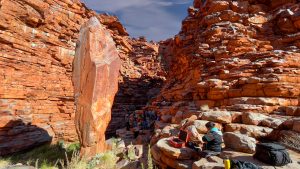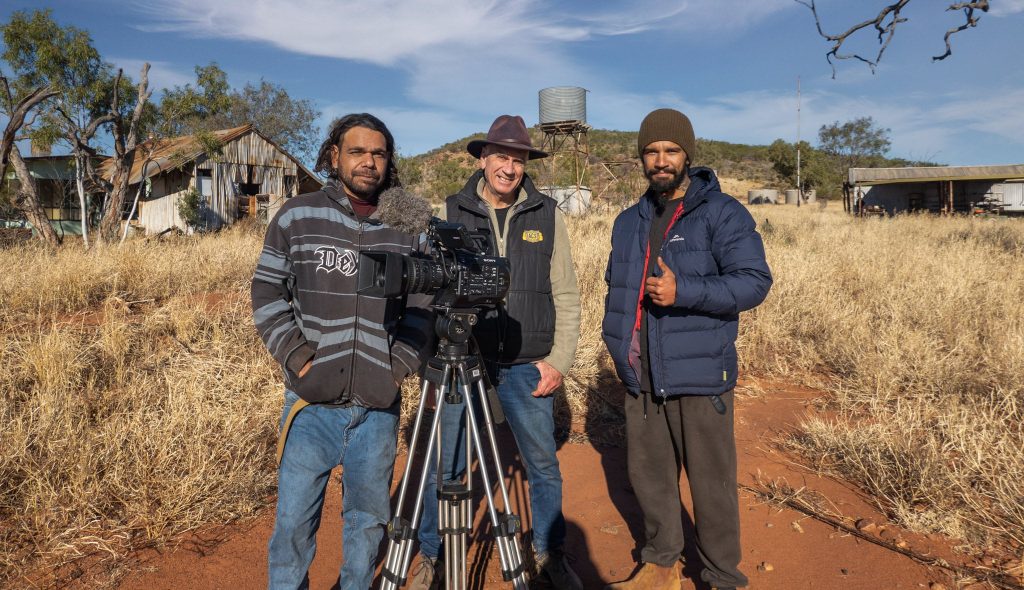How to light a green screen
The green screen should be set at around 3 meters from the subject and the larger the screen the better. Try to not compromise on this distance from the subject, even if it means choosing another location.
This gives you separation from the screen and reduces the amount of green reflecting off the screen and onto the back of your subjects. This green contamination is a real no-no.
Light your screen separately. Lowel Tota-Lites are good for this however KinoFlos or Lowel Caselights are also very good. I position one to each side and run them through a dimmer to control the output. The plan is to get an even spread on the screen with each of the lights washing out any creases in the fabric if that's what you are using. Lighting the screen so that it's one stop darker than the subject is a good rule of thumb.
Once you are happy, light your subject separately using all the modelling with the light and shade that you would normally use. Keep in mind that strong back-light on the hair and shoulders can exaggerate the fact that’s it is a green screen shot when the final composite is done. When you have finish lighting the screen, turn off the lamps lighting your subject so you can check to see if any green is reflecting back onto the backs of the subject. A small amount of back lighting will generally take care of this problem. It's important to make sure that there is no reflected green from the screen falling on the back of your subject – if there is, it will come back to haunt you as the production manager coughs up the extra dollars for the editor to clean up the problems.
Even lighting
You could try adding a sheet of Rosco 1/2 "Plus Green" to the lights illuminating the green screen. This gets you a solid green colour on the screen. Digital Green screens as they are known, are the best for shooting video as blue is the noisiest colour channel in videoland. They just scream green and are forgiving when it comes to pulling a matte from the background.
Finally, try not to use any softening or diffusing filters like ProMists – that's just adding a level of image softness that's not appreciated in the post process.
Blue screens are more for use with motion picture film because it's the only colour that doesn't exist in a skin tone and is best suited for film colour spectrum. However blue is the channel that carries the most film grain and blue is the channel with the most "noise" on video. Green has lots of advantages. It's often easier to light as it takes less to light it. It becomes more critical when shooting on DV & HDV with their higher compression and lesser colour sampling rates. That's why we love green screens.
© 2013 Pieter de Vries ACS
 The ability to trim the brightness for any given lighting situation is important and this light allows you to do that. The daylight balanced 50 degree model works best as an on-camera light in my experience.
The ability to trim the brightness for any given lighting situation is important and this light allows you to do that. The daylight balanced 50 degree model works best as an on-camera light in my experience. The great thing is that when you use it, nothing feels lit. It just appears like you've gotten lucky with soft natural available light every where you point the camera and we all know life's not really like that. It's the balance of light's output on the subject compared to the background that's the key to making it work.
The great thing is that when you use it, nothing feels lit. It just appears like you've gotten lucky with soft natural available light every where you point the camera and we all know life's not really like that. It's the balance of light's output on the subject compared to the background that's the key to making it work. Filming of a feature length documentary is underway in the Central Desert region of the Northern Territory. The film is being written, produced and filmed by PAW Media and Communications (Pintubi Anmatjere Warlpiri) based in Yuendumu, 300k NW of Alice Springs.
Filming of a feature length documentary is underway in the Central Desert region of the Northern Territory. The film is being written, produced and filmed by PAW Media and Communications (Pintubi Anmatjere Warlpiri) based in Yuendumu, 300k NW of Alice Springs.